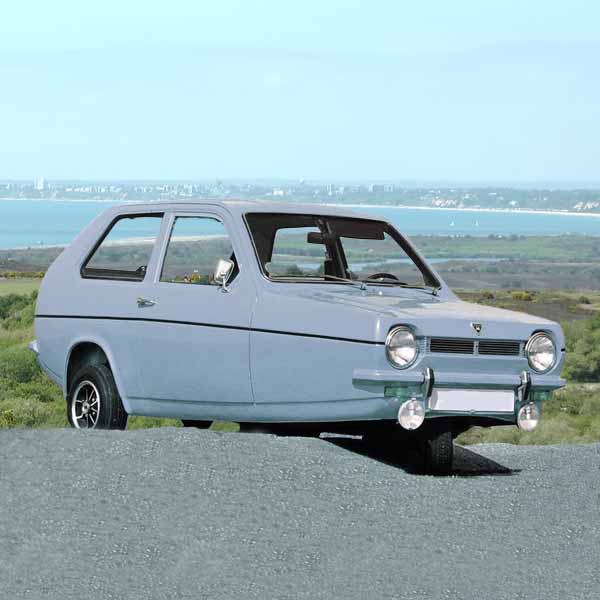On the face of it the Reliant Robin was a success. It exploited a quirk in British car regulations; these stated that a three wheeler with an unladen weight below 500 kilogram could be considered a motorbike. This meant that not only did the road tax payable on it plummet, but it could also be driven legally by someone who just held a motorcycle licence. Motorbikes being extremely popular at the time, this gave it a huge potential market!
Robins couldn't have a reverse gear, since only those with a full car driving licence were allowed to drive a vehicle fitted with one, but since motorbikes, even those with sidecars, didn't have reverse gears either most owners didn't see this as a problem.
In 1952 a four seater car was introduced and by 1956 a glassfibre body was available, cutting the weight down considerably and assisting with petrol consumption which could be as low as 70 miles to the gallon.
There was some power in this machine as well. The initial 600 cc engine eventually gave way to four-cylinder 750 and 850 cc engines which pushed the maximum speed up to 80 mph; and this is where the problems with it speeded up as well.
The problem was that the Robin was notoriously unstable. Going around a corner too quickly risked turning it over! it was particularly wobbly with just a driver in it and no passenger; many an owner took to carrying a cement bag or two on the passenger seat in an attempt to keep it on the road. Vandals had a field day tipping unattended Robins over onto their roofs and sales of fibreglass repair kits soared.
Yes it provided cheap transport for up to 4 people but it was only really happy driving in a straight line. Taking a bend at any sort of speed, let alone it's maximum 80 mph, and at best the front bodywork would hit the ground and at worst it would flip over, and go tumbling across the road. People died as a result.
Even if it didn't fall over it was still not the most comfortable car to drive in; the single wheel at the front gave it a tendency to sway alarmingly, and car sickness was an ever present threat.
A total of around 88,000 of these potential deathtraps were manufactured and sold, even though they were more expensive than the mini, which was a proper, safe car with four wheels. However to drive the mini as a qualified driver a full car licence was needed, whereas just a full motorbike licence was required for the Robin.
Jeremy Clarkson of Top Gear demonstrated how easy it was to roll a Robin; you can see the youtube video of it here; but he later admitted that the car had been doctored by putting extra weights in critical positions to make it far less stable. Perhaps this was ethically regrettable but it illustrated the problem quite well.
